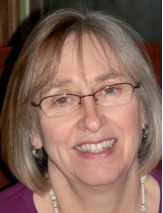More hunting for color. Here is my tea pot, made in England. I enjoy knowing where things come from, so I am hoping my readers do too. The delicious tomatoes, (grown hydroponically in Maine), a jar of olive oil, and purple rubber bands (originally wrapped around an asparagus bunch from somewhere in South America) complete my colorful January kitchen still life.
I have quite a large collection of drawings of Boston, but I believe that this is my first bar/restaurant. It is called Jacob Wirth’s, a German restaurant located in what is now Chinatown.
As another way to get through January, our town hosted a small scale winter carnival on the Town Green. The first night’s event was called Dinner With Jack Frost. The crowds were lining up near the bonfires for warmth and to get food handouts from seven area restaurants. The taco stand was new this year and proved most popular with families and young children.
In the background to the left is the New London Inn, and to the right is the town offices. The building, which looks like a church but isn’t, was built as an academic building for the local college way back when.
The carnival continued the next day, with a mini-golf course carved out of the snow that attracted children, parents, and grandparents. Again this year, ski joring thrilled the crowds. This is a Nordic sport in which skiers are pulled by horses around an oval course. The skiers are holding onto a rope attached to a horse, with rider. Ramps are skied over and rings are caught, usually.
This sport is so hard to describe that we decided to add a video taken by Bruce.
For various formatting reasons, it might not appear on iPads or in the email version of the blog sent by Feedblitz.
It seems to me that New Hampshire has a lot of sculptures. Mostly of people. Here is a bronze statue of General John Stark, 1728-1822, in the town of Stark, New Hampshire. He and his forces were the victors at the Battle of Bennington, Vermont, a key event in the American Revolution. I think he is pointing at Hessian soldiers, or maybe Vermont. There is lots of information about him online.
I drew this statue on a broiling hot day, standing at the base, squinting upwards. No one else was around in the quiet little village of white painted buildings.
It is so difficult to draw sculptures, but I persist in trying. On this day it was raining, and the statue is in the middle of a small traffic circle. So there were two additional challenges! The combination fountain and horse trough is located in Center Harbor, New Hampshire, and represents an Indian boy, hugging a goose. Around the edges are the words ‘For Dumb Animals’. ‘Dumb’ meaning unable to speak for themselves. That word is not used much anymore.
Here is some information that I found online about this sculpture which was put in place in 1907. It was commissioned by summer resident Herbert Dumaresq, whose property was named Kona Farm. The artist was Samuel Russell Gerry Crook, a student of famed sculptor Augustus St. Gaudens.
And lastly, here is a contemporary sculpture, on loan, in the town of Hanover. This bronze and steel sculpture, called Crouching Spider, is in front of a visual arts center on the campus of Dartmouth College. The heavy piece was balanced on eight spider toes. I only drew four of them.
The artist is Louise Bourgeois (1911–2010) This view is just a small section of the enormous sculpture. The legs were about 6 or 7 feet high. A sign explains that the sculptor made this in memory of her mother who was a weaver. The shadows were fun to draw.
The painted aluminum panels on the building in the rear are by Ellsworth Kelly. They were designed to fit onto the unusual building shapes.
I do get a chuckle when people tell me that they cannot draw a straight line! Me neither.













No comments:
Post a Comment